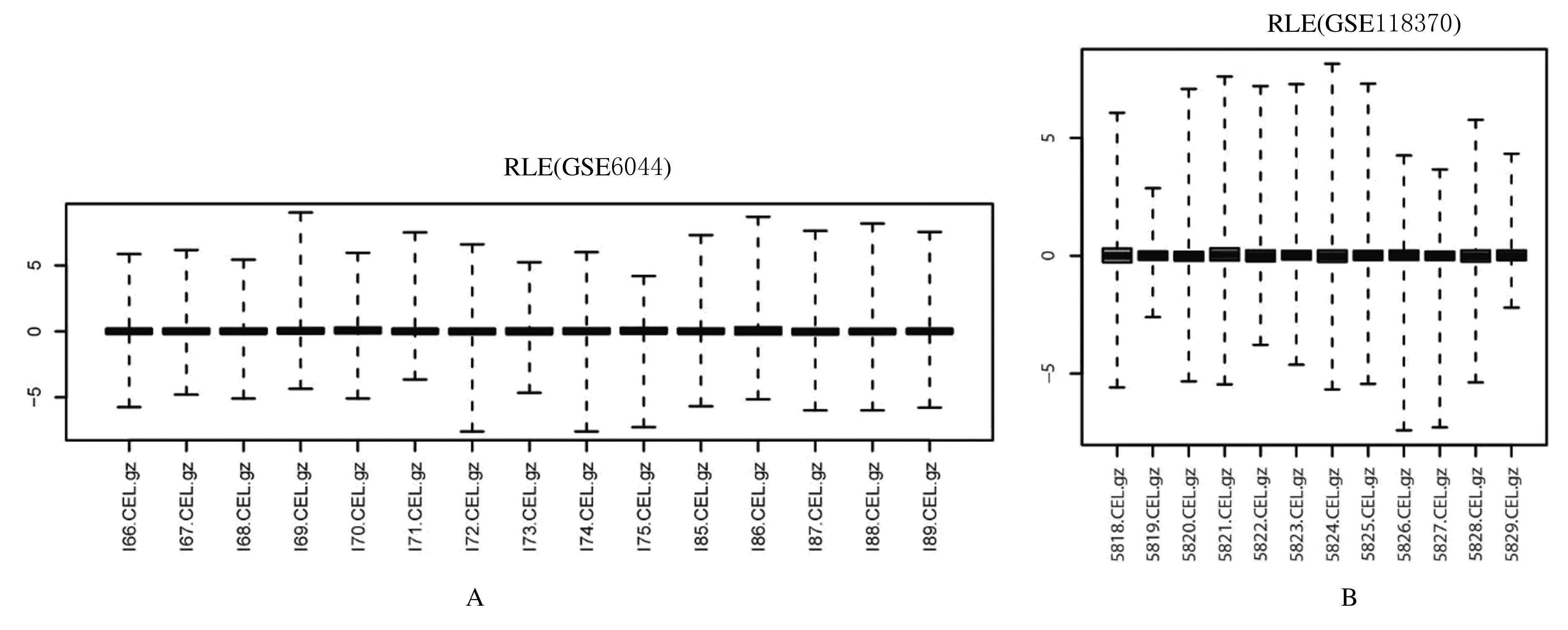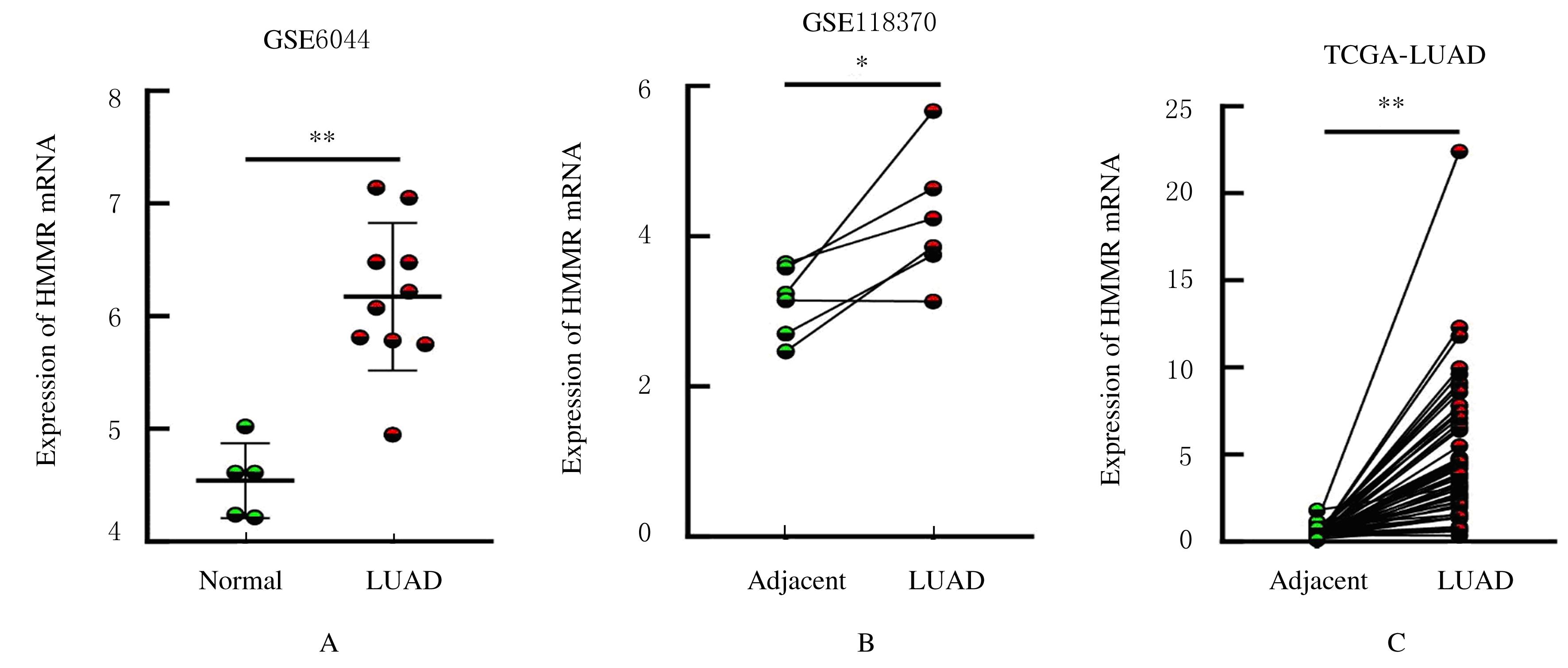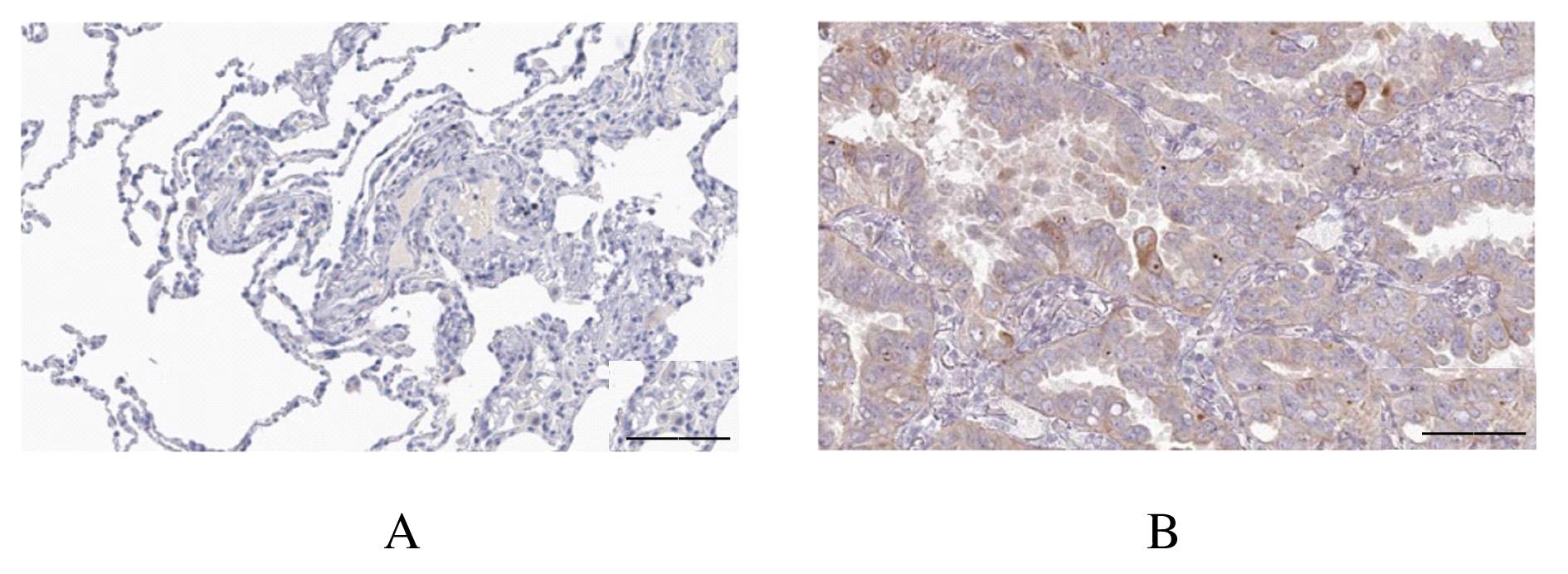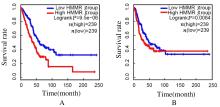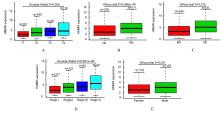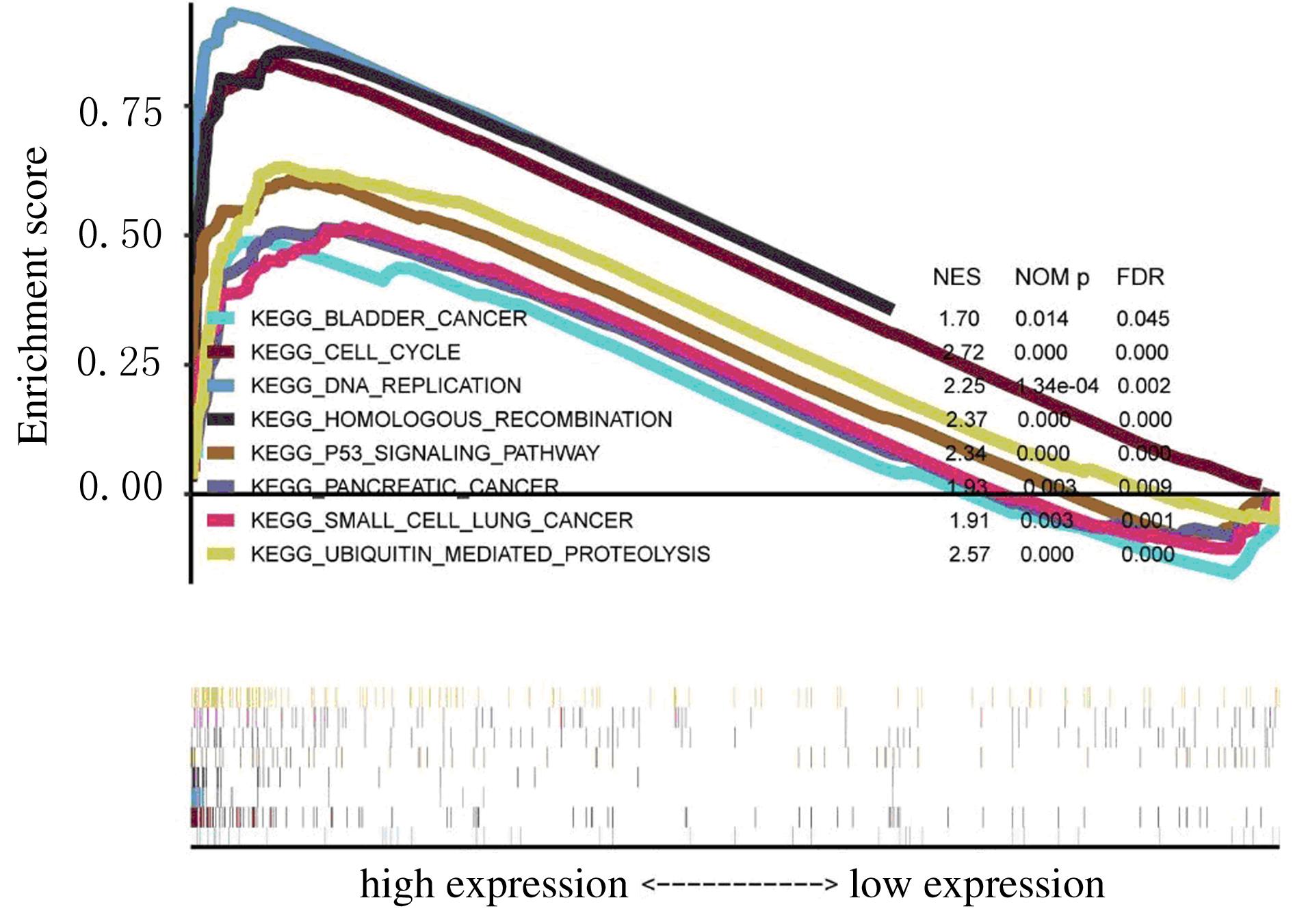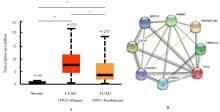| 1 |
CHEN R, MANOCHAKIAN R, JAMES L, et al. Emerging therapeutic agents for advanced non-small cell lung cancer[J]. J Hematol Oncol, 2020, 13(1): 58.
|
| 2 |
XU J Y, ZHANG C, WANG X,et al.Integrative proteomic characterization of human lung adenocarcinoma[J]. Cell, 2020, 182(1): 245-261.e17.
|
| 3 |
HE Z C, MEI L, CONNELL M, et al. Hyaluronan mediated motility receptor (HMMR) encodes an evolutionarily conserved homeostasis, mitosis, and meiosis regulator rather than a hyaluronan receptor[J]. Cells, 2020, 9(4): 819.
|
| 4 |
TOLG C, LIU M, COUSTEILS K, et al. Cell-specific expression of the transcriptional regulator RHAMM provides a timing mechanism that controls appropriate wound re-epithelialization[J]. J Biol Chem, 2020, 295(16): 5427-5448.
|
| 5 |
MISRA S, HASCALL V C, MARKWALD R R,et al. Interactions between hyaluronan and its receptors (CD44, RHAMM) regulate the activities of inflammation and cancer[J]. Front Immunol, 2015, 6: 201.
|
| 6 |
CHEN F, ZHU X Q, ZHENG J, et al. RHAMM regulates the growth and migration of lung adenocarcinoma A549 cell line by regulating Cdc2/CyclinB1 and MMP9 genes Running title: RHAMM regulates the growth of lung adenocarcinoma cells[J]. Math Biosci Eng, 2020, 17(3): 2150-2163.
|
| 7 |
LI W, PAN T H, JIANG W, et al. HCG18/miR-34a-5p/HMMR axis accelerates the progression of lung adenocarcinoma[J]. Biomed Pharmacother, 2020, 129: 110217.
|
| 8 |
AUGUSTIN F, FIEGL M, SCHMID T, et al. Receptor for hyaluronic acid-mediated motility (RHAMM, CD168) expression is prognostically important in both nodal negative and nodal positive large cell lung cancer[J]. J Clin Pathol, 2015, 68(5): 368-373.
|
| 9 |
BARRETT T, WILHITE S E, LEDOUX P, et al. NCBI GEO: archive for functional genomics data sets: update[J]. Nucleic Acids Res, 2013, 41(database issue): D991-D995.
|
| 10 |
WANG Z, JENSEN M A, ZENKLUSEN J C. A practical guide to the cancer genome atlas (TCGA)[J]. Methods Mol Biol, 2016, 1418: 111-141.
|
| 11 |
SUN S S, FU Y, LIN J Y. Upregulation of MYBL2 independently predicts a poorer prognosis in patients with clear cell renal cell carcinoma[J]. Oncol Lett, 2020, 19(4): 2765-2772.
|
| 12 |
XIA Z, OU-YANG W, HU T, et al. Prognostic significance of CDC25C in lung adenocarcinoma: an analysis of TCGA data[J]. Cancer Genet, 2019(233/234): 67-74.
|
| 13 |
WU H R, ZHANG J. Decreased expression of TFAP2B in endometrial cancer predicts poor prognosis: a study based on TCGA data[J]. Gynecol Oncol, 2018, 149(3): 592-597.
|
| 14 |
LI C W, TANG Z F, ZHANG W J, et al. GEPIA2021: integrating multiple deconvolution-based analysis into GEPIA[J]. Nucleic Acids Res, 2021, 49(W1): W242-W246.
|
| 15 |
CHANDRASHEKAR D S, BASHEL B, BALASUBRAMANYA S A H, et al. UALCAN: a portal for facilitating tumor subgroup gene expression and survival analyses[J]. Neoplasia, 2017, 19(8): 649-658.
|
| 16 |
CONNELL M, CHEN H, JIANG J, et al. HMMR acts in the PLK1-dependent spindle positioning pathway and supports neural development [J]. Elife, 2017, 6: e28672.
|
| 17 |
MAXWELL C A, RASMUSSEN E, ZHAN F, et al. RHAMM expression and isoform balance predict aggressive disease and poor survival in multiple myeloma[J]. Blood, 2004, 104(4): 1151-1158.
|
| 18 |
HAMILTON S R, FARD S F, PAIWAND F F, et al. The hyaluronan receptors CD44 and Rhamm (CD168) form complexes with ERK1, 2 that sustain high basal motility in breast cancer cells[J]. J Biol Chem, 2007, 282(22): 16667-16680.
|
| 19 |
CHU T L H, CONNELL M, ZHOU L, et al. Cell cycle-dependent tumor engraftment and migration are enabled by aurora-A[J]. Mol Cancer Res, 2018, 16(1): 16-31.
|
| 20 |
TILGHMAN J, WU H, SANG Y, et al. HMMR maintains the stemness and tumorigenicity of glioblastoma stem-like cells[J]. Cancer Res, 2014, 74(11): 3168-3179.
|
| 21 |
ASSMANN V, MARSHALL J F, FIEBER C, et al. The human hyaluronan receptor RHAMM is expressed as an intracellular protein in breast cancer cells[J]. J Cell Sci, 1998, 111(12): 1685-1694.
|
| 22 |
GREINER J, RINGHOFFER M, TANIGUCHI M, et al. Receptor for hyaluronan acid-mediated motility (RHAMM) is a new immunogenic leukemia-associated antigen in acute and chronic myeloid leukemia[J]. Exp Hematol, 2002, 30(9): 1029-1035.
|
| 23 |
LI H, GUO L, LI J W, et al. Expression of hyaluronan receptors CD44 and RHAMM in stomach cancers: relevance with tumor progression[J]. Int J Oncol, 2000, 17(5): 927-932.
|
| 24 |
CHOI S, WANG D, CHEN X, et al. Function and clinical relevance of RHAMM isoforms in pancreatic tumor progression[J]. Mol Cancer, 2019, 18(1): 92.
|
| 25 |
ZHANG D Y, LIU J H, XIE T, et al. Oleate acid-stimulated HMMR expression by CEBPα is associated with nonalcoholic steatohepatitis and hepatocellular carcinoma[J]. Int J Biol Sci, 2020, 16(15): 2812-2827.
|
| 26 |
WANG D, NARULA N, AZZOPARDI S, et al. Expression of the receptor for hyaluronic acid mediated motility (RHAMM) is associated with poor prognosis and metastasis in non-small cell lung carcinoma[J]. Oncotarget, 2016, 7(26): 39957-39969.
|
| 27 |
MARKASZ L, SAVANI R C, SEDIN G, et al. The receptor for hyaluronan-mediated motility (RHAMM) expression in neonatal bronchiolar epithelium correlates negatively with lung air content[J]. Early Hum Dev, 2018, 127: 58-68.
|
| 28 |
SONG J M, IM J, NHO R S, et al. Hyaluronan-CD44/RHAMM interaction-dependent cell proliferation and survival in lung cancer cells[J]. Mol Carcinog, 2019, 58(3): 321-333.
|
| 29 |
YANG D, MA Y, ZHAO P, et al. Systematic screening of protein-coding gene expression identified HMMR as a potential independent indicator of unfavorable survival in patients with papillary muscle-invasive bladder cancer[J]. Biomed Pharmacother, 2019, 120: 109433.
|
 )
)
 )
)

